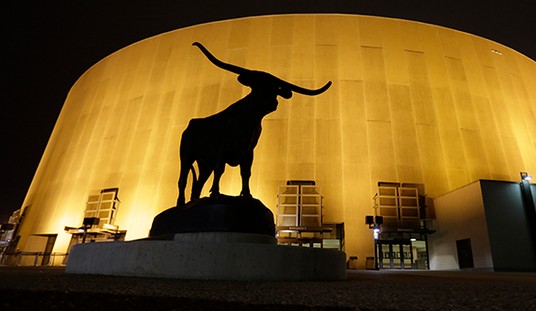Forests of towering wind turbines filling the horizon off the shores of Massachusetts? Perhaps not. The Cape Wind Project was billed as America’s first offshore wind farm well over a decade ago, and it’s been the recipient of vast amounts of taxpayer subsidized cash to get the development effort off the ground. With a price tag in the billions, the future viability of the green energy initiative relied entirely on the willingness of utility companies to purchase the energy it would create. But this month those plans hit a huge road block after the developers failed to meet key milestones and the energy companies balked.
An ambitious and controversial push to erect America’s first offshore wind farm has been dealt what some call a potentially “fatal” blow after two utility companies pulled out of commitments to buy energy from the lagging operation.
The $2.6 billion Cape Wind project, a private operation benefiting from millions in federal subsidies, is attempting to pioneer offshore wind energy in pursuit of an eco-friendly, sustainable energy supply. Wind turbines would be installed off the coast of Massachusetts’ Cape Cod in Nantucket Sound.
But Cape Wind is now in limbo after utility companies terminated huge purchase agreements. They pulled out after the project failed to meet two requirements by Dec. 31: to secure financing and begin construction.
NSTAR and National Grid were in a deal to purchase more than 77% of the energy which the wind farm would produce, but the company had thus far failed to secure a deal to sell the rest of it. Having missed multiple agreed upon targets, the buyers have walked away for now – perhaps permanently – and the entire endeavor may now be scrapped. This will leave the taxpayers of the Bay State (as well as the rest of the nation, having kicked in federal funding) wondering where all that money went.
Over the past year or two, improvements in turbine technology have brought wind power to the point of actually being competitive with fossil fuels or hydro and threatening to become profitable. But that depends on a couple of major and unavoidable factors. First, you have to build in a place with enough steady wind to ensure relatively steady production (just as with solar) so that the grid can rely on the power. At a glance, one would think that an offshore location near the coast would qualify. But you also have to be able to build a project like this from the ground up with all the complicated logistic and business issues involved. The Cape Wind project appears to have failed on this score.
Frankly, I think there is a place for wind energy in the overall American grid strategy, and I hope they keep on working to improve the technology. It may never be able to replace conventional sources in much of the country, but it can probably contribute in a niche fashion and we can use all the energy we can get. There’s a team in Alaska which built a balloon with a turbine which is bringing power to remote areas, floating the device a couple thousand feet in the air. That won’t work on large scales or in all areas, but it’s at least clever. It just goes to show what a little good thinking will do.








Join the conversation as a VIP Member